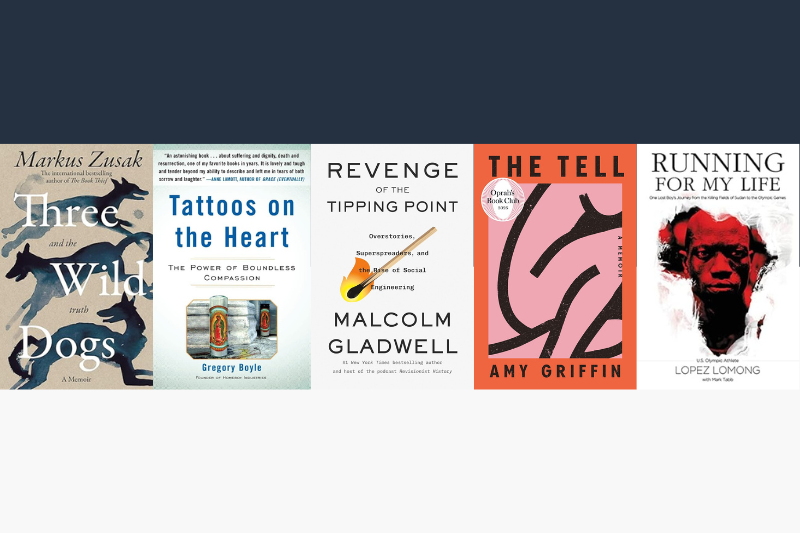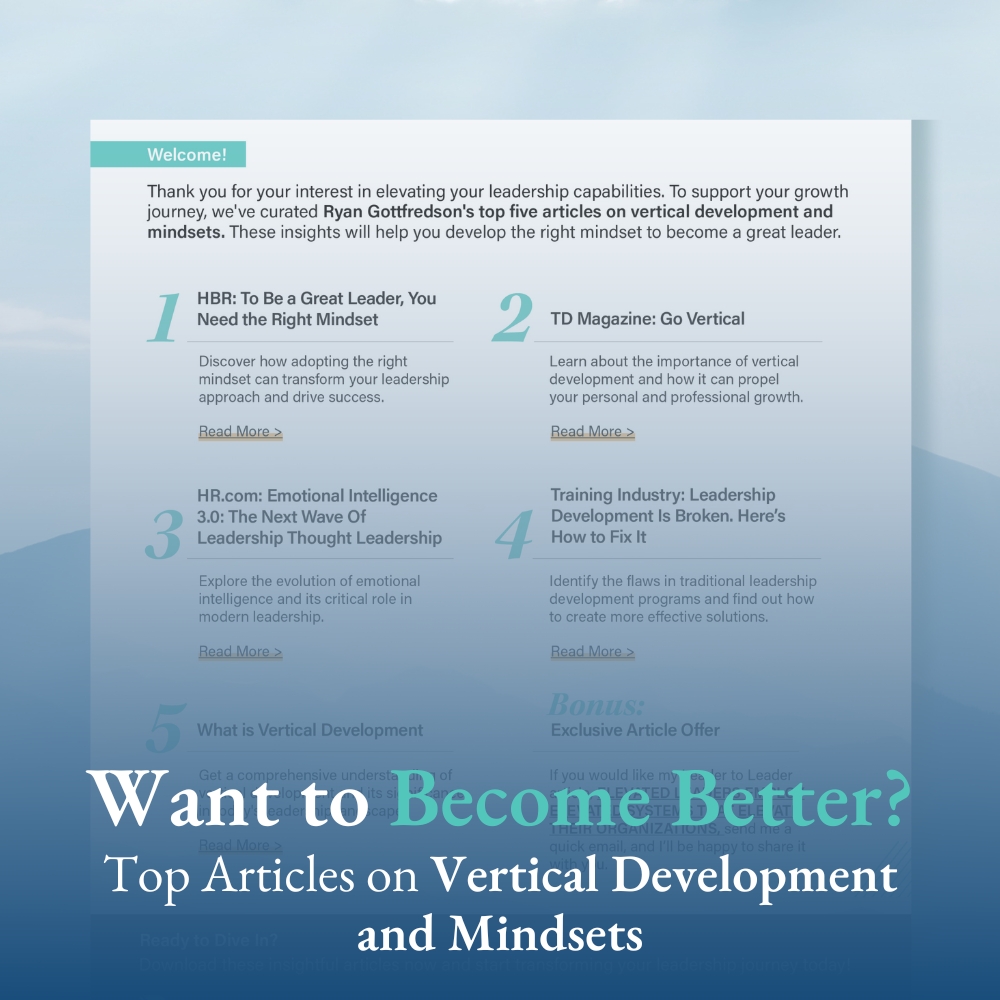Over the last several weeks, I have been sharing examples of people I have worked or interacted with that are at different stages of their personal vertical development journeys.
The purpose of doing this is to help you:
- Better see what vertical development looks and feels like
- See the value of focusing on your vertical development
- Be inspired, as I have been, by the courage of others who are letting go of who they have been and embracing an elevated version of themselves
Three weeks ago, I introduced you to Tracy, who is elevating from Mind 1.0 to Mind 2.0.
Two weeks ago, I introduced you to Todd, who is Stuck in Mind 2.0.
This week, I want to share my own story of stepping into Mind 3.0.
Example #4 – Ryan (Me)
Last week, I mentioned how in order to vertically develop, we have got to awaken to our own fears and insecurities.
If you would have asked me 18 months ago if I was aware of my fears and insecurities, I would have said, “Yes.”
It was about at that same time that I was doing a deep dive into the connection between trauma and mindsets/vertical development. I was reading almost any book on trauma that I could get my hands on.
One of the early books that I picked up, and probably still my favorite book on trauma, was The Body Keeps the Score by Bessel van der Kolk.
At the end of the book, van der Kolk walks through the research on various different trauma healing treatments. One of the treatments that caught my attention was a form of trauma therapy called EMDR (Eye Movement Desensitization and Reprocessing). This caught my attention because (1) I had never heard of it, and (2) of the different therapy methodologies, research was indicating that it was perhaps the most effective at treating trauma.
If you are unfamiliar EMDR, it involves exploring past traumatic events while engaging in bilateral stimulation in the form of either tapping your shoulders/arms back and forth, listening to a ping go back and forth, or shifting your eyes back and forth.
Research doesn’t really know why, but this bilateral stimulation opens up neural pathways to:
- Better explore past traumatic events
- Desensitize those traumatic events
- Reprocess those traumatic events in a healthy way.
To me, this seemed a bit hocus pocus, but given the strength of the research findings, it is something I wanted to try out for myself. Shortly thereafter, I started doing EMDR with a trauma therapist.
But, here is the thing, I didn’t think that I had experienced trauma in my life. So, for me, I went into therapy thinking that it might help me clear some high-level mental blocks.
As I engaged in EMDR, we quickly honed in on places where I had some mental blocks. Once we found these blocks, over weeks, my therapist guided me in the process of discovering the root of these blocks.

Awakening to My Fears and Insecurities
What I discovered, to my surprise, was that there were at least two traumatic events that occurred during my childhood that have been playing a significant and limiting role in my life.
Both of these events were instances where I needed significant emotional support from my parents, but I never received it.
What I have come to discover is that while my parents were always there for me physically (e.g., they went to all of my sporting events), they were rarely there for me emotionally. From a very early age, I had learned that it was up to me to meet my own emotional needs. It is this lack of emotional support that led to me:
- Becoming an incredibly independent person
- Constantly avoiding my own emotions and the emotions of others
- Having a hard time trusting others, particularly when it comes to the idea of others meeting my emotional needs
What I have since learned is that for essentially my entire life, I have lived void of emotional connection.
When I was in Mind 1.0 from the time I was a teenager until about 30, I sought to fill this void by standing in with my various social and religious groups.
When I shifted into Mind 2.0 around 30, I can now see how I nonconsciously believed that if I can stand out, advance, win, and get ahead, I will be worthy of deep emotional connection.
But, of course, that is a thirst that can never be quenched by others. It is only a thirst that can be quenched through personal healing.
So, over the last 18 months, I have been working with a trauma therapist. During this time, my therapist has noticed that I have become softer and more emotional. Tears come more easily now than ever before. And, I feel like I am in a better mental and emotional place than I have ever been.
Stepping into Mind 3.0
Knowing about and talking about vertical development, it has been easy for me to admit that I have largely been driven by a Mind 2.0 internal operating system. But, through the trauma work that I have been doing, I feel like I am spending a much larger percentage of my time in Mind 3.0.
My development journey surely isn’t done, and I don’t think any vertical development journey ever really is. We can always level up.
I don’t know when I will be done working with my trauma therapist, but I can honestly say that I have loved the process of working with her. It isn’t easy or comfortable work, but I have found it so incredibly insightful. I continue to draw new connections between my past and how I manifest myself in the present. The more I awaken to these connections, the more empowered I feel to let go of who I have been and grab hold of a better version of myself.











4 Responses
That is fascinating, Ryan!
Thank you!
Hi Ryan…. Just a thought I would seek your thoughts upon.
The unconcious mind comes in activated state during our sleep when we start dreaming. So dreams in a way activate our unconcious mind. But, is it true that at times the unconcious mind may get activated even when the person is fully awake and not sleeping. That , at that very moment…. conscious mind goes into backseat while unconscious takes actions thoughts and speech under it’s control… Even if person fully is awake.
Most likely person doesn’t remember what he said or did then
Yes, I think so. In terms of wakeful consciousness, I think that people can fall on a spectrum from fully nonconscious to fully conscious. And, I think they can even vary throughout that continuum throughout the course of a day.
Something that psychological researchers have found is that 90% of our thinking, feeling, judging, and acting is driven by our unconscious automatic processes. This is why it is so important to focus on our internal operating system when we are trying to develop ourselves (vertical development > horizontal development).